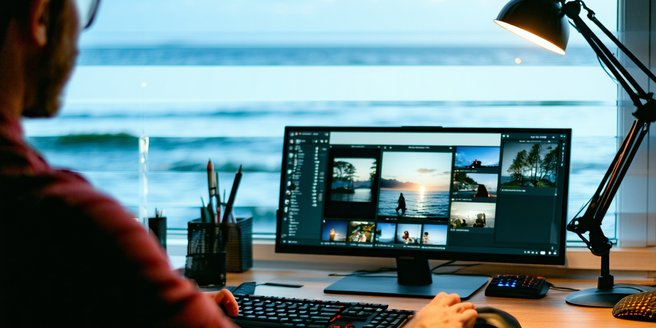Virtual Backgrounds In Video Conferencing Software

Exploring the Evolution of Virtual Background Technology
The evolution of virtual background technology has been swift and innovative. In the early days of video conferencing, backgrounds were often an overlooked element, with users utilizing plain or real-life settings. However, advancement in AI and graphics processing has transformed how we approach virtual backgrounds. From simple image blurring to dynamic, 3D virtual environments, today’s technology allows users to integrate company branding, seasonal thematics, or personal expressions seamlessly. The continued improvements in machine learning and video processing algorithms make virtual backgrounds more realistic and less intrusive. As a result, they have moved from being a mere novelty to an essential tool in both professional and social communication platforms.
How Virtual Backgrounds Enhance Professionalism and Privacy
Virtual backgrounds play a pivotal role in enhancing professionalism and privacy during video calls. They enable individuals to conceal their personal spaces, which can be crucial for professionals working from home. By removing distractions from the visual frame, virtual backgrounds help maintain a clean and consistent professional image. Companies often provide branded backgrounds for their employees to adhere to during meetings, promoting brand consistency. Moreover, virtual backgrounds can help protect the privacy of what is in one’s home, reducing the risk of unintentional disclosure of personal or confidential information during video calls. As such, virtual backgrounds are not just an aesthetic choice but also a significant tool for privacy and professional integrity.
Step-by-Step Guide to Setting Up a Virtual Background
Setting up a virtual background is straightforward with most video conferencing platforms. Begin by ensuring your device meets the minimum technical requirements, such as a compatible processor and updated software. In your conferencing application, navigate to the settings panel and locate the virtual background option. From there, you can either upload your own image or select from available templates provided by the application. Ensure the lighting in your environment is even, as uneven lighting can affect the background’s performance. Position yourself centrally in the frame and reduce any extensive movements to maintain background stability. If you’re using a green screen, calibrate it within the software settings for a more dynamic, professional background effect.
Popular Virtual Background Features Across Platforms
Different video conferencing platforms offer a variety of virtual background features designed to cater to diverse user needs. Zoom, for instance, allows users to apply both static images and videos as backgrounds, along with a built-in ‘Enhance My Appearance’ filter. Microsoft Teams offers personalized background settings and background blur features, catering to both professional and casual users. Google Meet has integrated custom image backgrounds, replicating a feature popularized by Zoom, while also focusing on optimizing background lighting and clarity. These platforms continuously integrate feedback and technological advancements to provide users with engaging and seamless virtual background experiences that adapt to the dynamic requirements of the digital age.
Common Challenges and How to Overcome Them
Despite their benefits, virtual backgrounds can present challenges such as compatibility issues, improper lighting, and bandwidth limitations. To combat these, it is crucial to ensure your device meets all software requirements and that you have a reliable internet connection. Poor lighting is a common hurdle, often leading to pixelation or distortion; thus, using soft, even lighting can greatly enhance the background’s quality. When experiencing connectivity issues, consider reducing video resolution to stabilize the image. Lastly, users without a green screen may face blending issues; adjusting room lighting and camera positioning can help mitigate these effects, keeping the virtual background sharp and professional.
Creative Ways to Customize Your Virtual Meeting Space
Customizing your virtual meeting space can enhance engagement and showcase personality. Start by selecting a background that complements the theme of your meeting—seasonal designs, abstract art, or purpose-driven images can all set an appropriate tone. Customize backgrounds further by incorporating company logos or brand colors to reinforce corporate identity. Animated backgrounds or subtle motion graphics can add a dynamic touch, but ensure these do not distract from the meeting’s focus. Encourage participants to share their own creative backgrounds, fostering a sense of community and interaction. Leveraging unique, customized backgrounds not only enlivens the virtual meeting space but also provides an opportunity to cultivate a distinct digital presence.